 This month’s Industry Insider interview is with Connie Hsu, Editorial Director at Roaring Brook Press. She was born in Taiwan and grew up in Alabama, though Connie admits to being “one of THOSE editors” who didn’t dream of working in publishing when she was younger. Thankfully, she discovered the Sweet Valley Twins series in the school library, and really identified with the character Elizabeth, who wanted to be a writer. From that point on, Connie knew she wanted to be in media.
This month’s Industry Insider interview is with Connie Hsu, Editorial Director at Roaring Brook Press. She was born in Taiwan and grew up in Alabama, though Connie admits to being “one of THOSE editors” who didn’t dream of working in publishing when she was younger. Thankfully, she discovered the Sweet Valley Twins series in the school library, and really identified with the character Elizabeth, who wanted to be a writer. From that point on, Connie knew she wanted to be in media.
Connie took a detour in college as a psychology major at the University of Illinois, but after a year, she switched to advertising, followed by a Master’s degree in journalism. It took two internships—one with a Chicago magazine and one with an Atlanta magazine—for her to realize her true calling was in publishing.
Let’s find out how she went from that realization to creating an impressive career in children’s literature where she’s been able to work with some of the most exciting picture book makers working today.
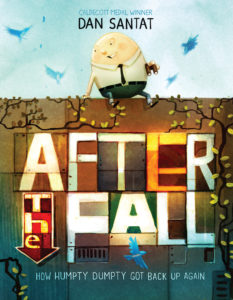 RVC: One of my favorite PBs in the last few years is a book you edited–Dan Santat’s After the Fall, (which I included in OPB, of course). What was the biggest challenge you and Dan had in making that book work?
RVC: One of my favorite PBs in the last few years is a book you edited–Dan Santat’s After the Fall, (which I included in OPB, of course). What was the biggest challenge you and Dan had in making that book work?
CH: From the get-go, we knew that the story arc would end with Humpty Dumpty climbing back up the wall, to show him overcoming his fears, after taking the time to heal from his trauma. But we felt that simply going back up doesn’t quite capture the sense of personal triumph, to push through so much pain and fear. We had several conversations about how to make the story and character feel transformative, to show how Humpty Dumpty is changed forever by his choice to climb up. Dan jokingly mentioned that Humpty should hatch, since he’s an egg, and noted that the imagery might terrify young readers. We laughingly referenced the iconic scene from Alien. But when Dan mentioned that, it felt right. Of course Humpty would hatch and take flight! And Dan was totally on board to try it, going through rounds and rounds of sketches to get the moment just right.
RVC: The Alien reference is hilarious. I’d never have guessed it, though, since that moment in the story is so sweet vs science fiction‑y.
Now, whether you’re working with Dan Santat or a fresh-out-of-college illustrator, how do you know how much you can/should push them?
CH: I think this varies from editor to editor. I’m accustomed to pushing my creators fairly hard, because I believe that the best work isn’t easy. To produce something truly standout and special, there should be some struggle, because we have to always questions ourselves and what we’re doing—and why it deserves notability.
That said, there are different styles of pushing. I saw that when I worked with the legendary picture book editor Neal Porter, who is so gentle and nuanced with his directives; he asks open-ended questions and encourages his creators to take time to incubate and think. Meanwhile, I feel I’m more like a coach on the field, running drills and patterns.
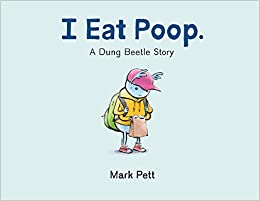 RVC: In early 2020, you picked up Mark Pett’s I Eat Poop: A Dung Beetle’s Story at auction. What specifically motivated you about that book to bid against other companies?
RVC: In early 2020, you picked up Mark Pett’s I Eat Poop: A Dung Beetle’s Story at auction. What specifically motivated you about that book to bid against other companies?
CH: It was Mark’s brilliant combination of great, evocative title, smart and innovative concept, and an expressive and relatable character. I knew from the tiny cover thumbnail in my email that I wanted to love the book. And when I got into the story about a young dung beetle who is embarrassed about eating poop, I saw so many layers to this story. It’s got the fun potty humor mixed in with important themes about identity, heritage, and self-acceptance. And it’s hilarious to boot!
RVC: In general, do you think book auctions are a good thing?
CH: In some ways, auctions are good for letting creators know what the market value for their work is, and it informs the publishers too. However, I find it challenging when advance levels skyrocket. It’s great for the authors and their agents, who take a commission, but I sometimes worry that it sets unrealistic expectations. A book that sells for a very high advance will need to perform even better in the market for the project to be financially sound, and sometimes, not even the best marketing and publicity can make that happen. Sometimes, it’s just luck. What I worry is that the book and its creator(s) will be seen as a business failure. This can mar a creator’s sales track and make it more challenging to bring on more books by them in the future. It’s also such a personal blow to go down in advance too.
RVC: I can hear the chorus of currently unpublished authors howling, “I’ll take a book auction any day of the week, even if my track record and future advances take a hit!” But there’s another solid route to success, isn’t there?
CH: I’ve been fortunate enough to have some authors who will submit to me exclusively. Their agents can still get them a very strong advance, and it deepens the trust and bonds I have with them, which I feel leads to better books.
RVC: Let’s back up a little bit. Before you got your New York publishing career going, you worked as an intern and a freelance writer for celebrity gossip magazine In Touch. Care to share any behind-the-scenes secrets?
CH: I know this shouldn’t have surprised me, but the majority of the gossip news was planted. Either someone would get a tip from a publicist, or we would try to create drama. For instance, one assignment of mine was to show a paparazzi photo of a woman celebrity to several doctors, who were willing to be quoted in the magazine, and ask if they thought the woman looked pregnant. My job was to go through a list of doctors until one said yes, and that would be the story we ran. That person did not ultimately have a baby, and I later felt bad that we probably just caught her at a bad angle and made a big deal out of it.
RVC: I’m glad you were able to move on from that to more rewarding work. Yet at one point, though, you were living in New York City, taking on odd jobs, and you ended up working for a daycare. How’d you go from that situation to landing a job at Little, Brown?
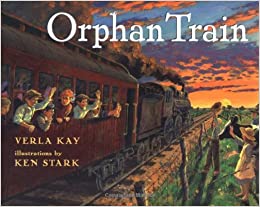 CH: Working at the daycare allowed me to revisit childhood favorites, like James and the Giant Peach. It also exposed me to more recently published books at the time, like Orphan Train by Verla Kay, which opened my eyes to the depth and complexity that a picture book could have. When I mentioned enjoying reading these books to a friend of mine, who worked at Scholastic Book Club, she forwarded me a job posting with Alvina Ling at Little, Brown and encouraged me to apply. I hadn’t thought about children’s books as a career at the time. When I had my first interview with Alvina Ling though, I knew I had to have the job. She inspired me from the get-go!
CH: Working at the daycare allowed me to revisit childhood favorites, like James and the Giant Peach. It also exposed me to more recently published books at the time, like Orphan Train by Verla Kay, which opened my eyes to the depth and complexity that a picture book could have. When I mentioned enjoying reading these books to a friend of mine, who worked at Scholastic Book Club, she forwarded me a job posting with Alvina Ling at Little, Brown and encouraged me to apply. I hadn’t thought about children’s books as a career at the time. When I had my first interview with Alvina Ling though, I knew I had to have the job. She inspired me from the get-go!
RVC: What are some of the biggest differences between working in the magazine world and the book world?
CH: The magazine world felt very ephemeral, and the timelines were also very tight. There’s this stress on making sure the magazine had content and it had to be created, no matter what, while the stress I feel from publishing is making sure authors and agents are happy and ensuring the best quality book possible. Books have more permanence, and the feeling of pride when a book is done is just so much more satisfying.
RVC: Back to the present. Let’s break down a typical day in the life of Connie. Put some percentages on how much is spent on each of the following–queries/submissions; email; meetings; editing; industry news.
CH:
- queries/submissions: 10%
- emailing: 40%
- meeting: 40%
- editing: 5% (mostly happens during nights and weekends)
- catching up on industry news: 5%
RVC: I think writers have this mental image of editors hunched over manuscripts day and night–yes, in this mental image, it’s universally agreed that the manuscripts are always paper–helping us all make dynamite books that change the lives of young readers now and for generations to come. But like the rest of us, the reality for editors is an ocean of emails and an avalanche of meetings. Fair enough!
Let’s talk about happier things. Agent lunches—great thing, or the greatest thing?
CH: A great thing. Some agents have become genuine friends and trusted colleagues. I feel lucky when an agent I adore shares an author with me who becomes a success. It’s like building a mini family.
RVC: What actually happens at these lunches?
CH: Agent lunches are something I do miss, because it’s a comfortable way to get to know someone and connect on projects. Sometimes, the effect isn’t immediate; rather, it’s an investment in getting to know the person and seeing the payoff down the line.
RVC: Got a great example of that?
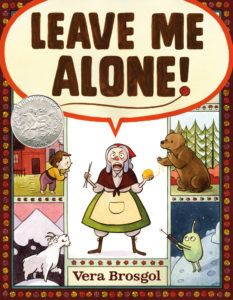 CH: Sure–the agent Judy Hansen of Hansen Literary. Judy and I met over lunch a couple of years before I changed jobs and moved to Macmillan, where her author Vera Brosgol publishes her graphic novels with First Second. Judy wanted to keep Vera at Macmillan for her picture books, and when I got to Roaring Brook, she thought of me as a possible editor for Vera. Fortunately, we all connected wonderfully, which resulted in Vera’s debut picture book, Leave Me Alone!, a Caldecott Honor book.
CH: Sure–the agent Judy Hansen of Hansen Literary. Judy and I met over lunch a couple of years before I changed jobs and moved to Macmillan, where her author Vera Brosgol publishes her graphic novels with First Second. Judy wanted to keep Vera at Macmillan for her picture books, and when I got to Roaring Brook, she thought of me as a possible editor for Vera. Fortunately, we all connected wonderfully, which resulted in Vera’s debut picture book, Leave Me Alone!, a Caldecott Honor book.
RVC: In light of the COVID-19 reality, what are you doing to replicate agent lunches?
CH: I’m having phone calls with agents, although I haven’t really had a chance to meet with new agents. The remote working has resulted in increased workload, so it’s been challenging to find time.
RVC: On average, how many submissions do you deal with each month?
CH: I average about 40 — 50 submissions per month.
RVC: While many editors (and agents, for that matter) use form responses to speed things up, you haven’t done that in the past.
CH: I try not to, because I understand that authors pour their heart and soul into projects and it helps them feel seen and heard to have a personalized decline letter. That said, with the increasing volume of submissions, I’ve had to resort to form letters.
RVC: How many of your response notes include an invitation to send it back—an R&R (revise and resubmit)?
CH: Maybe 10 projects per year.
RVC: How many manuscripts do you take to the editorial committee for serious consideration each month? And what stakeholders are there besides yourself and your editorial team (which includes Emily Feinberg, who OPB interviewed not so long ago)?
CH: I bring about 3 – 4 projects per month and discuss with my team: Emily Feinberg, Kate Meltzer, Mekisha Telfer, and Nicolás Oré-Girón. When we have an intern on staff, we invite them to participate. In the past, we’ve had our design team join, but not since we started remote working.
RVC: Beyond reading a manuscript aloud, what’s a strategy/technique most picture book writers don’t know/use but they really should if they want to move closer to the “YES!” they crave?
CH: Being aware of the marketplace is a huge help! Keep track of what’s coming around the bend and new deals. Signing up for Publishers Weekly’s Children’s Bookshelf gives writers a terrific resource.
RVC: Roaring Brook still has a small-press feel, despite having the backing of a Big Five. How do you maintain that?
CH: We have an extraordinary publishing history in the short time we’ve been around (~25 years), with several award winners, and more recently, major bestsellers. It’s a legacy and reputation we uphold, while also bringing fresh and exciting voices to the list. We’re also a small team, like a family, where each person has a distinctive taste, but we have shared goals in wanting to publish high quality, notable books.
RVC: One last question for this part of the interview. What are two Roaring Brook titles that really represent your brand in the way you want it to be?
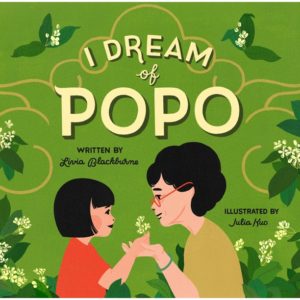 CH: I’ll share two recent titles: I Dream of Popo and Outside, Inside. Both are emotionally rich and memorable reads, and they tug at the heartstrings in the most perfect way.
CH: I’ll share two recent titles: I Dream of Popo and Outside, Inside. Both are emotionally rich and memorable reads, and they tug at the heartstrings in the most perfect way.
RVC: Those are some memorable books, for sure (we gave a strong review of Outside, Inside at OPB not that long ago).
But we have to move ahead because it’s time for the LIGHTNING ROUND! The point values are tripled and the clock starts……NOW! What’s a secret talent of yours that most don’t know about?
CH: I’m very good at parallel parking.
RVC: Best late-night reading snack?
CH: Baked Cheetos. All the pleasure, half of the guilt.
RVC: If you could be any picture book character for a day, who would it be?
CH: Peter from The Snowy Day.
RVC: What’s the One That Got Away?
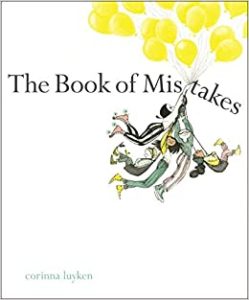 CH: The Book of Mistakes by Corinna Luyken.
CH: The Book of Mistakes by Corinna Luyken.
RVC: Favorite non-Roaring Brook picture book of 2020?
CH: Me & Mama by Cozbi A. Cabrera.
RVC: Three words that sum up your picture book philosophy?
CH: Unexpected. Exciting. Extraordinary.
RVC: Thanks so much, Connie. It’s been great getting to know what the secret of Roaring Brook’s success is–clearly it’s GOOD people being at the core of all you do!


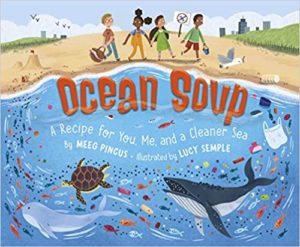
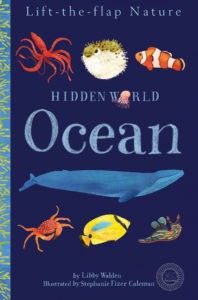
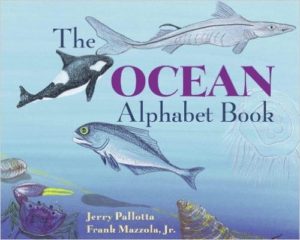
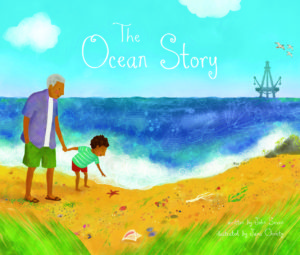
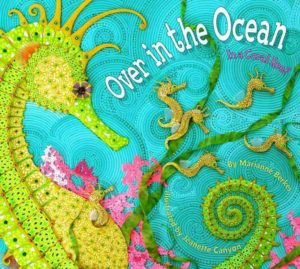
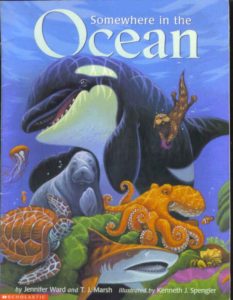
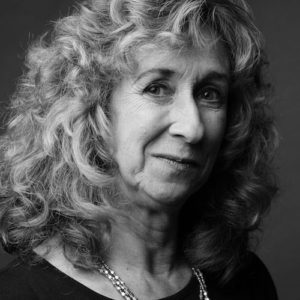 I’m a sucker for authors with great personal stories, and Sy Montgomery shares this on her website:
I’m a sucker for authors with great personal stories, and Sy Montgomery shares this on her website: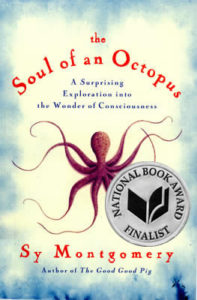
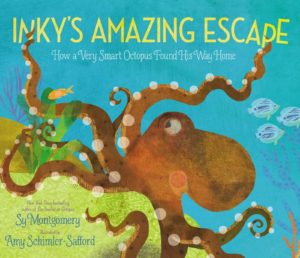
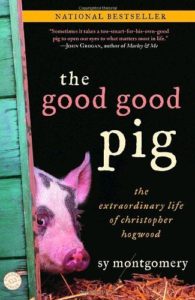
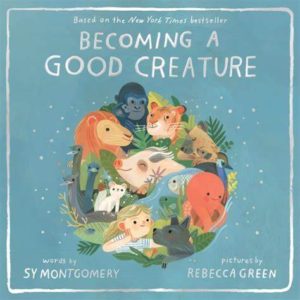
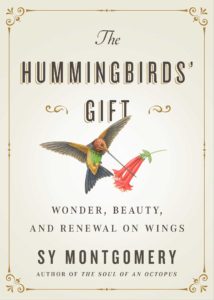
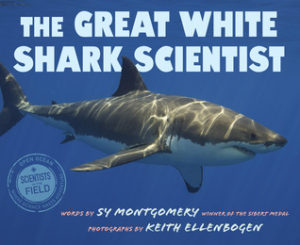
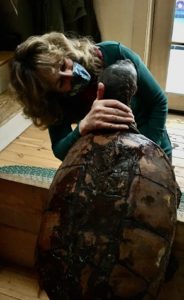
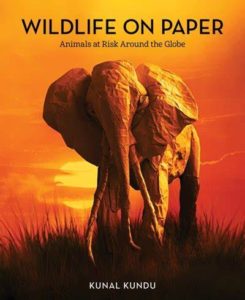
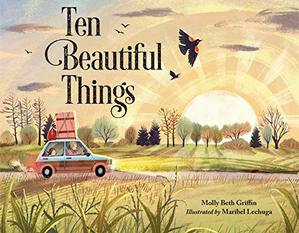
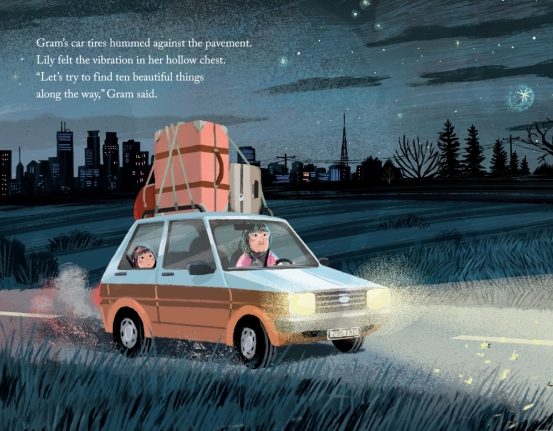
 Rebecca Zomchek is a children’s book illustrator who has worked as a concept artist and cartoonist. She earned her
Rebecca Zomchek is a children’s book illustrator who has worked as a concept artist and cartoonist. She earned her